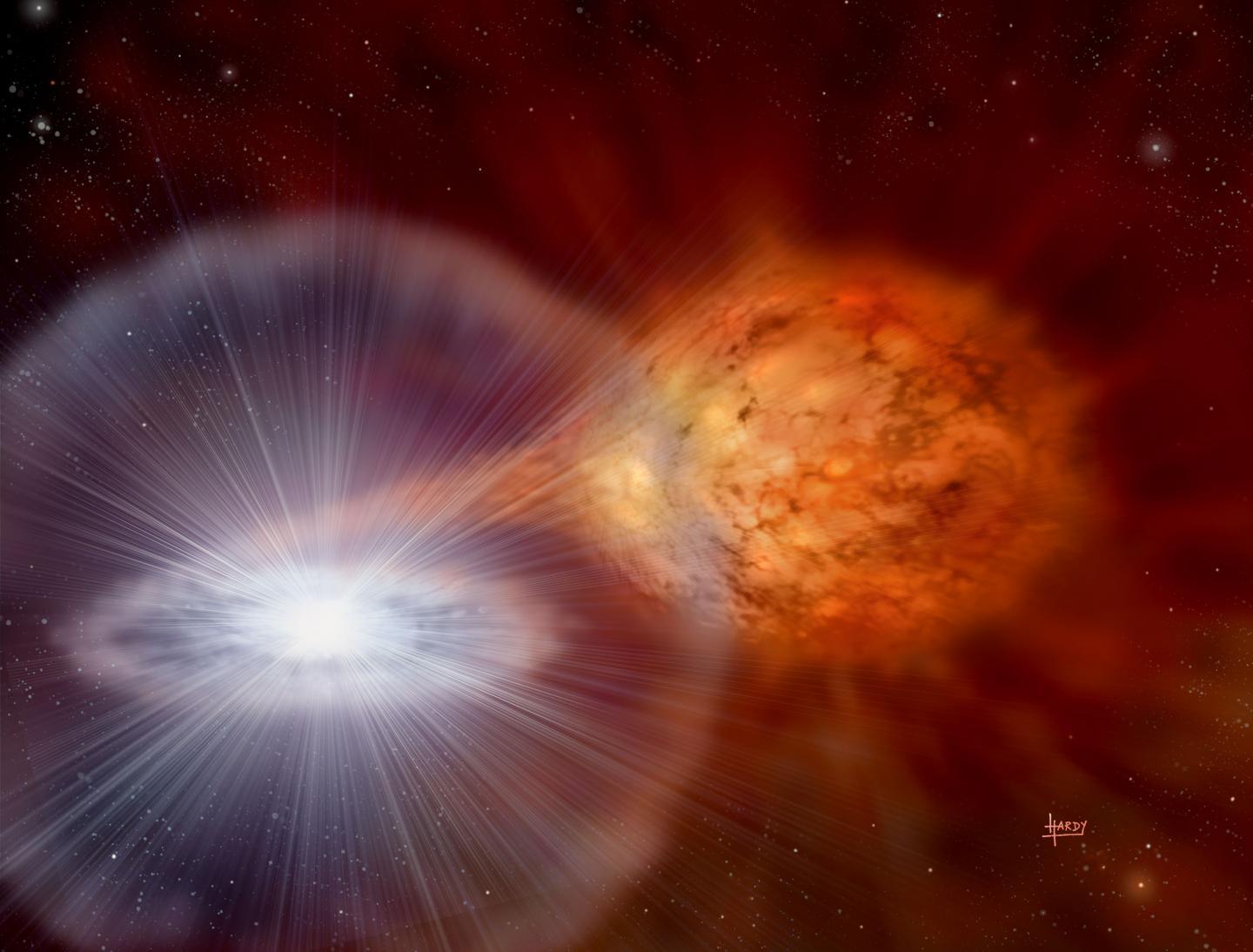Astronomers at the University of Sydney are part of a team that has taken images of the thermonuclear fireball from a 'nova star' for the first time tracking the explosion as it expands.
The research is published in the journal Nature today.
The eruption occurred last year in the constellation of Delphinus (the Dolphin).
Professor Peter Tuthill, from the University's Sydney Institute for Astronomy and co-author on the paper says astronomers are excited about the achievement:
"Although novae often play second fiddle in the popular imagination to their more famous big cousins - the supernovae - they are a truly remarkable celestial phenomenon."
The term nova (Latin for new) was coined when the famous 16th century Danish astronomer Tycho Brahe first realised that on rare occasions the unchangeable patterns of the fixed stars could be suddenly joined by bright interlopers which took days or weeks to gradually fade from sight.
Astronomers eventually traced the culprit responsible for these stellar conflagrations - an exotic, compact star called a white dwarf whose intense gravitational field is able to strip matter from a larger nearby companion star.

This is an artist's conception of a star system responsible for a nova. A stream of matter is being drawn from the donor star (right) by the compact white dwarf (left).
(Photo Credit: David A. Hardy/ astroart.org)
"Like a little stellar mosquito, the white dwarf continually sucks hydrogen from its partner, forming an ocean on its surface. After drawing about as much mass as the entire planet Saturn, the pressure reaches a critical point, then boom! The stellar surface turns into one titanic hydrogen bomb hurling a fireball out into space and propelling a formerly dim, obscure star system into prominence as a nova in our night skies," Professor Tuthill said.
"The ferocity of the expansion is breathtaking, engulfing a region the size of the Earth's orbit within a day, and passing Jupiter's orbit in less than two weeks. Despite the enormous size of the fireball, at the remote distance to this star of fifteen thousand light years, it took very special technology to be able to image it at all."
Dr Vicente Maestro of the University of Sydney, who also participated in the research, said "We are really lucky to be collaborating with the team running the CHARA array in Southern California. They are able, using its state of the art technology, to make the exquisitely fine measurements necessary to witness this event."
"The technical challenge posed requires magnification equivalent to watching a flower in my Spanish hometown of Algeciras unfold from here in Sydney, a distance of 12,000 kilometres away," Maestro said.
The leader of the scientific team taking the measurements, Dr Gail Schaefer from Georgia State University, was on-hand as the data came in.
"It was hugely exciting to see the nova grow a little bigger than before with each night's observation. This is the first time astronomers have been able to witness an expanding fireball as if it were in the local neighborhood, rather than way out in the galaxy," Dr Schaefer said.
The significance, as Dr Theo ten Brummelaar of Georgia State University explains, is that "These new data allow us to study in detail exactly how the fireball evolves as the gas expands and cools. It seems like the ride is a lot more complicated and bumpy for the gas than the simple models used previously would have predicted."
Perhaps most surprising of all, despite the fury of the detonation on the white dwarf's surface, the star itself escapes relatively unscathed and continues to buzz around its host like a persistent mosquito accumulating more matter for a repeat performance at a future date.
For this particular nova, an encore is unlikely to occur in our lifetimes; but the galaxy is rich with other systems like this one, awaiting their moment to shine anew in the night sky. And when they do, the researchers say they will be ready.
Source: University of Sydney